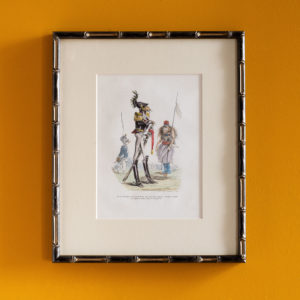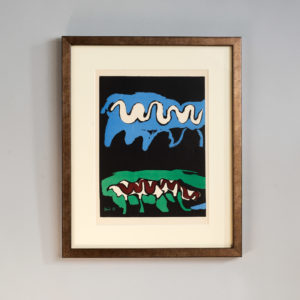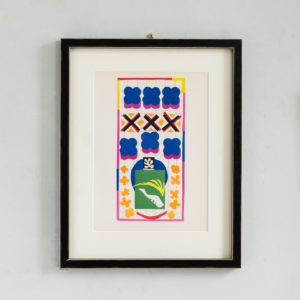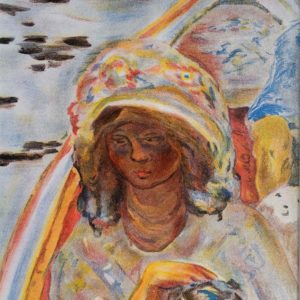Showing the single result
Page 1 of 1
-

Public and Private Life of Animals, by J. J. Grandville, ‘la Sauterelle’,
£220 eachPublic and Private Life of Animals, by J. J. Grandville, ‘la Sauterelle’,
First published in France, these prints are based on the drawings of the famed caricaturist J. J. Grandville. Born Jean Ignace Isidore Gérard, Gradville; he fought on the barricades during the revolution of 1830 which dethroned Charles X, the last Bourban king. It was during this period that his cartoons appeared in two of the most famous satirical journals of the time; Le Charivari and Le Caricature, but in 1835 these publications were suppressed by the government of Louis-Philippe. This event extinguished his income and means of political expression and forced him to start making a living by book illustration. The ‘Public and Private Life of Animals’ allowed him to criticise society and its effect on individuals through one of the oldest narrative types; the animal fable. His caricaturist’s skills combined the human and animal characteristics giving him a vehicle of expression as to what was not permissible in ‘Society’ but was perfectly acceptable when the material was presented as humorous or satirical.£220 each
Featured Items
-

The Four Elements, Earth by Francisco Bores, Verve Vol. 1 / No. 1.
£600The Four Elements, Earth by Francisco Bores, Verve Vol. 1 / No. 1.
The Verve Review was a purposefully luxurious. It ran from 1937 to 1960, but with only 38 editions available, due to the high degree of design and editorial work dedicated to each issue. Each edition contained unique lithographic prints, commissioned by the editor, and each cover a double-page lithograph elaborated by one of the artists contained within. It was the brainchild of its editor Stratis Eleftheriades, a Greek National who moved to Paris in the early thirties to take part in the growing Modernist movement, writing under the name of Teriade.£600 -

Henri Matisse, ‘The Last Works of Henri Matisse’
£900 eachHenri Matisse, ‘The Last Works of Henri Matisse’
From Verve Vol. IX No. 35/36 published by Tériade under the title 'The Last Works of Henri Matisse'£900 each -

The Dance, by Henri Matisse, Jan – March 1939 / No. 4.
£1,200The Dance, by Henri Matisse, Jan – March 1939 / No. 4.
The Verve Review was a purposefully luxurious. It ran from 1937 to 1960, but with only 38 editions available, due to the high degree of design and editorial work dedicated to each issue. Each edition contained unique lithographic prints, commissioned by the editor, and each cover a double-page lithograph elaborated by one of the artists contained within. It was the brainchild of its editor Stratis Eleftheriades, a Greek National who moved to Paris in the early thirties to take part in the growing Modernist movement, writing under the name of Teriade.£1,200 -

Portrait Fragment by Pierre Bonnard, Verve Vol 2 / No. 5-6.
£600Portrait Fragment by Pierre Bonnard, Verve Vol 2 / No. 5-6.
The Verve Review was a purposefully luxurious. It ran from 1937 to 1960, but with only 38 editions available, due to the high degree of design and editorial work dedicated to each issue. Each edition contained unique lithographic prints, commissioned by the editor, and each cover a double-page lithograph elaborated by one of the artists contained within. It was the brainchild of its editor Stratis Eleftheriades, a Greek National who moved to Paris in the early thirties to take part in the growing Modernist movement, writing under the name of Teriade.£600
